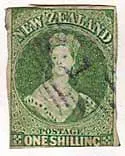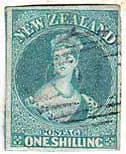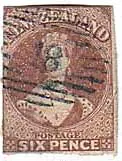Definitives Tour.
Links:- Full-Faced Queens.
1855 Full-Faced Queens - Part One.
A basic introduction to the Full Faced Queens issues.
1855 Full-Faced Queens - Part Two.
Looking at factors affecting the condition and value of Classic Stamps.
1855 Full-Faced Queens - Part Three.
A collection of covers from before and using Full Faced Queen stamps.
1855 Full-Faced Queens - Part Four.
The modern use of the Full Faced Queen design.
A basic introduction to the Full Faced Queens issues.
1855 Full-Faced Queens - Part Two.
Looking at factors affecting the condition and value of Classic Stamps.
1855 Full-Faced Queens - Part Three.
A collection of covers from before and using Full Faced Queen stamps.
1855 Full-Faced Queens - Part Four.
The modern use of the Full Faced Queen design.
In this second post on the Full-Faced Queens, we will look at the condition of these stamps and try to understand why they are valued as they are today. Included on this page are some errors caused during printing. Finally, we will look at a complete set of Full-Faced Queens that was sold in 2007.
The classic stamps of New Zealand such as the Full Faced Queens are often the subject of entire collections. Specialist collectors are interested in paper changes, watermarks, plate numbers and other items found in these early stamps. Much of this is beyond the intended scope of this blog. I just want to give you some basic knowledge of these early issues so we can enjoy them, admire the beauty of them, without getting into the fine detail. In this I mean no disrespect for those serious specialist collectors as at one stage I was one myself, heading down a similar specialist path with Malayan Japanese Occupation Overprinted Stamps.
When you are looking at classic stamps, like the Full Faced Queens, the rules regarding condition may seem to change. Let me explain; with modern stamps, a flaw or printing error would demand a premium price but with classic stamps, a perfect example would demand the premium. By perfect I mean a well-centred stamp with white borders on all four sides, without a heavy cancel strike hiding the Queen's face. Believe me, good examples like these are very hard to find.
In this post, I am going to look at some poor examples and explain why they are not considered good examples. Personally, I think it is almost as much fun collecting these types as it is looking for that almost impossible perfect example.
Paper Creases Before Printing.
There were no prices on these images so I'm unsure of their worth but I would expect they would demand a premium. I have not seen many examples like this. The paper was creased when the ink was applied and then flattened out leaving a line where the ink never reached.
Imperf (Hand cut stamps)
The very first New Zealand stamps were imperforated which meant they had to be cut from the sheet by hand. This was often done in a hurried manner without a lot of care taken, so we end up with many examples of poorly cut stamps. Below I have included six of these and you will notice that in some you can even see part of the adjoining stamps. Remember during this early period there were only three values with two more values appearing later, examples of hand-cut stamps will usually be found among these earlier values.
Half a Stamp.
Now here is something really different - half a stamp used for postage of half the full stamp's value. The story of the stamp goes back to 1858 when it was used to post a letter from Otago to England. It comes from the period when postage rates changed and it cost sixpence to post a letter – only they didn’t have any six-penny stamps, so some enterprising post office employee down in Port Chalmers decided to cut the shilling stamp in half and sell them each as six-pence ones. Seems to have worked ok as the letter did reach its destination in England.
Hand Cancelled Stamps.
Here is an interesting example. I do not know much about the history of this stamp so we'll have to work it out from what we can see in the image above. First, it has been hand-cut, imperforated so its most likely come from the earlier period before 1864. Next, on the right-hand side, there is some evidence of what might have been a cancel but that is unclear from what we can see. Finally, we come to the reason I think this stamp is rather special. It has been signed by someone, most likely a post office official as proof of purchase and use. It is possible that this stamp was used for revenue purposes but I am not sure that revenue stamps and stamp duty were used before 1867.
Hand Cancelled Stamps.
Here is an interesting example. I do not know much about the history of this stamp so we'll have to work it out from what we can see in the image above. First, it has been hand-cut, imperforated so its most likely come from the earlier period before 1864. Next, on the right-hand side, there is some evidence of what might have been a cancel but that is unclear from what we can see. Finally, we come to the reason I think this stamp is rather special. It has been signed by someone, most likely a post office official as proof of purchase and use. It is possible that this stamp was used for revenue purposes but I am not sure that revenue stamps and stamp duty were used before 1867.
Perforated Examples
When stamps began to be machine perforated it helped centre them better but there are still many poorly centred stamps or stamps which have been ripped as they were removed from the sheet. Below are five examples of this and you will notice that even with perforating sometimes part of an adjoining stamp can be seen. Notice some of these stamps suffer from heavy postmarks as well.
Full Face Queen 2d blue
Extra perf line through design. Paper crease during printing bottom centre.
Full-Face Queen 1/- with major perf shift.
While the perforation has moved so far that the Value Bar is now at the top there is what appears to be perforations in the correct position above the words "New Zealand."
This appears to be a fairly well centred stamp but there is a piece of the design missing from the bottom right-hand corner. Since traces of the image can still be seen in this area I think this could caused by fluid touching the paper during printing. It has been suggested that maybe the printing plate wasn't too low to touch the inking rollers in this location but the odd shape of the blank patch leads me to consider the first idea.
Bad Plate Wear.
Over time the printing plates began to show signs of wear which affected the image they could produce. I have found three great examples of plate wear in the 2d blue. The black on the second two stamps are postal cancels since all three of these stamps have been used. So that you can compare them I have added a good example of this stamp below.
Here is a good used example. So worn Queen Victoria can hardly be seen.
Heavy Postmarks.
The main purpose of postmarks applied by the post office was to cancel the stamp so it could not be used again and on these early stamps, this was often done very well. The stamp was proof that the price of postage had been paid. The postmark strike was the proof that stamp had been used. Many stamps from the early issues have been so heavily postmarked that it is almost impossible to make out any details of the stamp's design. What is of most importance with Full Faced Queens is that the value at the bottom is readable, the "New Zealand" at the top can be seen and the Queen's Face can be viewed. You can see a good example of this in the 2d Blue above.
Notice that while details of the stamp itself have been covered over on some of these examples, details of the postmark can be clearly seen. In the top row, the green one shilling is clearly showing an Otago postmark. In the lower row, there are two Dunedin postmarks. Two others show what appears to be the number "18."
Actually, postmarks from the various post offices around New Zealand could become a collection all of its own. Many of the post offices have now long since closed making them impossible to find on modern mail. I will pull some good examples from my collection to show you in a post sometime.
We have a good collection of cancels from all over New Zealand on a stamp issued in 1900. Go check this out at 1900 Boer War Thematic Collection.
A full set sold in 2008.
This 1862 - 1871 set of Full Face Queens in 2007 was valued at approx. $1,750.00.
As you can see the stamps are of very poor quality compared to what would be acceptable in modern stamp collections. Among the faults which can be seen are torn perforations, off centred images, badly worn plate images and very heavy postmarks. In spite of all this, the set would still be considered a good buy by a collector who could not afford the high premium demanded perfect stamps.
This stamp image relates to one of the comments found below. All we can find out about it is in the description given by Mowbrays in their Auction 34 - Saturday, 16 March 2019.
1855 1d dull carmine, London print - part "Cancelled" corner cancel presentation stamp, one of 6 examples given by Perkin Bacon to Rowland Hill's family.



































I've been following the changes and additions on this page. Been some interesting errors. I've not really thought about errors in the Full-Faced Queens before.
ReplyDeleteJan
Errors in Full-faced Queens. That is something you never hear but many of the stamps shown above must be considered as errors. Its just that good quality stamps are so hard to come by that these poorer examples are excepted. My purpose here was to show the variety of these stamps and give a brief explanation has what happened to cause these errors.
DeleteTake for example that set at the bottom. I'd be happy to include it in my collection as it shows every stamp but look at the variety of errors. In fact I think a collection made up of stamps like these with good captions explaining them would be really interesting. I might return to the Full-faced Queens sometime and explore more of these varieties.
Allan.
Any chance you could add information or more importantly pictures of the 1855 1d cancelled by Perkins Bacon? I believe that there would only be 4 or 6 in existence and one recently sold at auction by Mowbrays. Thanks!
ReplyDeleteSorry, I'm not sure we will be able to help you with that. While its a bit too specialised for the scope of this blog our experts have agreed to take a look at your request. Meanwhile, we suggest that contacting Mowbrays might be worth a try.
DeleteAnne
After looking into your request all we could find is what is mentioned by Mowbrays in their auction catalogue. See above at the bottom of this post.
DeleteAllan
We appreciate your engagement with our content. To ensure a respectful and constructive community, please take note of the following:
- No Spam, Please: We do not tolerate spammy or promotional comments. Any such comments will be promptly removed.
- Moderation in Place: All comments are moderated to maintain a positive and inclusive environment. Please be patient, as it may take a little time for your comment to appear.
- Sign In with Google: To comment, please sign in using your Google account. This helps us maintain the integrity of our community and allows for better interaction.